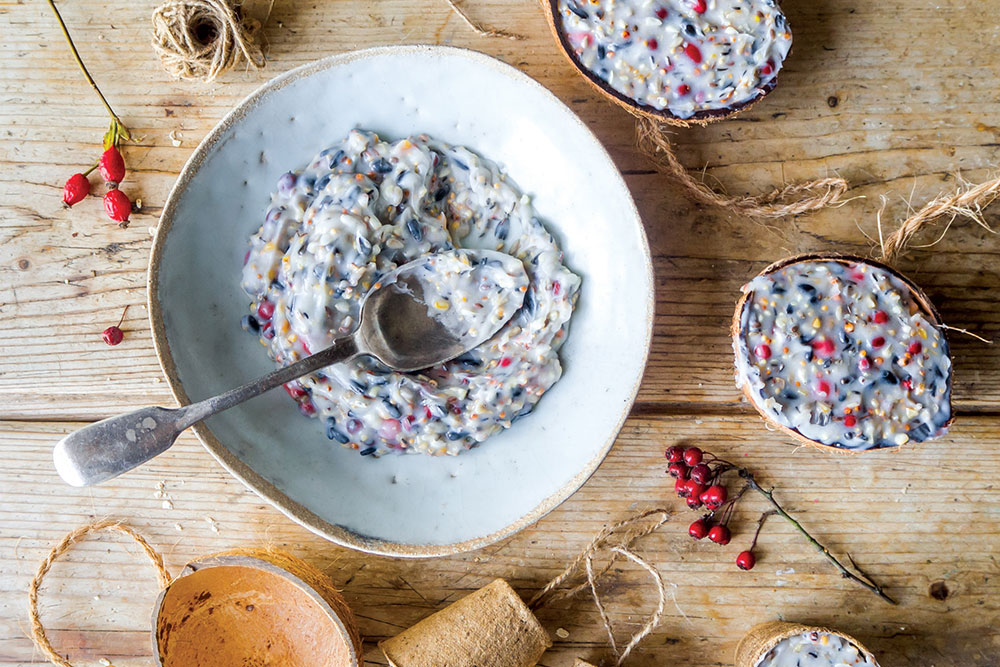The eco DIY bird feeder to hygge up your city garden

Sitting in a warm room watching birds through a window is immensely relaxing, and knowing that you have put food out to help them survive the coldest weeks of the year makes this even more satisfying. A record of the various species of bird that visit your area is the perfect addition to a regular nature diary and allows you to become familiar with the diversity of birdlife in your local patch. You may spot winter migrants or more timid species of birds that will emerge to feed when the ground is frosty and most of the wild berries have been eaten.
Many garden centres have a section dedicated to bird food and feeders, but making special snacks for your feathery visitors is not only easy, it also ensures that you know exactly what the birds are eating and can pack their snacks with nutritious ingredients. This recipe includes hawthorn berries and rosehips that I collected from the hedgerows in November, but if you make these later in the winter, when fewer wild berries are available, they can be replaced with currants, sultanas or dried cranberries.
You may need to wait several days or even weeks for your local birds to discover the berry snacks you have made, but as the cold weather begins to bite, food sources like this are essential for survival, so they will find your treats eventually.
Materials
- Lard
- Wild berries such as hawthorn and rosehips, or dried fruit
- Wild bird seed
- Porridge oats
- Cheese (optional)
- Saucepan of boiling water
- Heatproof bowl with a diameter larger than that of your saucepan
- Coconut halves (available online), small coconut-fibre plant pots or yoghurt pots
- Garden twine
Instructions
- Weigh your lard – an average block weighs around 250g (9oz).
- Measure out the same weight in total of berries, birdseed, oats and cheese, in whatever proportions you wish.
- Melt your lard in a large heatproof bowl over a pan of simmering water.
- Remove the bowl from the heat and add your berries, dry ingredients and cheese (if using) to the lard and blend well with a spoon.
- Leave the mixture to cool until the lard becomes opaque but is still soft enough to spoon into the coconut halves, plant pots or yoghurt pots.
- Meanwhile, poke a small hole in the bottom of your yoghurt pots or coconut-fibre plant pots with a pencil or small screwdriver (the coconut halves often come with a string already attached).
- Cut a piece of garden twine around 25cm (10in.) long, fold it in half and tie a double knot to form a loop.
- Push your loop of string through the hole in the pot so that the knot remains inside.
- Fill as many of your containers as you can with your mixture and allow it to cool and solidify completely.
- If you have used yoghurt pots, the plastic can be cut away and recycled before you hang your bird snacks outside.
- Choose a spot in your garden at least 1.5m (5ft) off the ground that is tricky for cats and other predators to reach, and with some foliage nearby to shelter shy species of bird between visits to the feeding area.
- Sit near a window with a warm drink and watch the birds feeding, record them in your diary and perhaps even sketch them.
From Making Winter by Emma Mitchell











